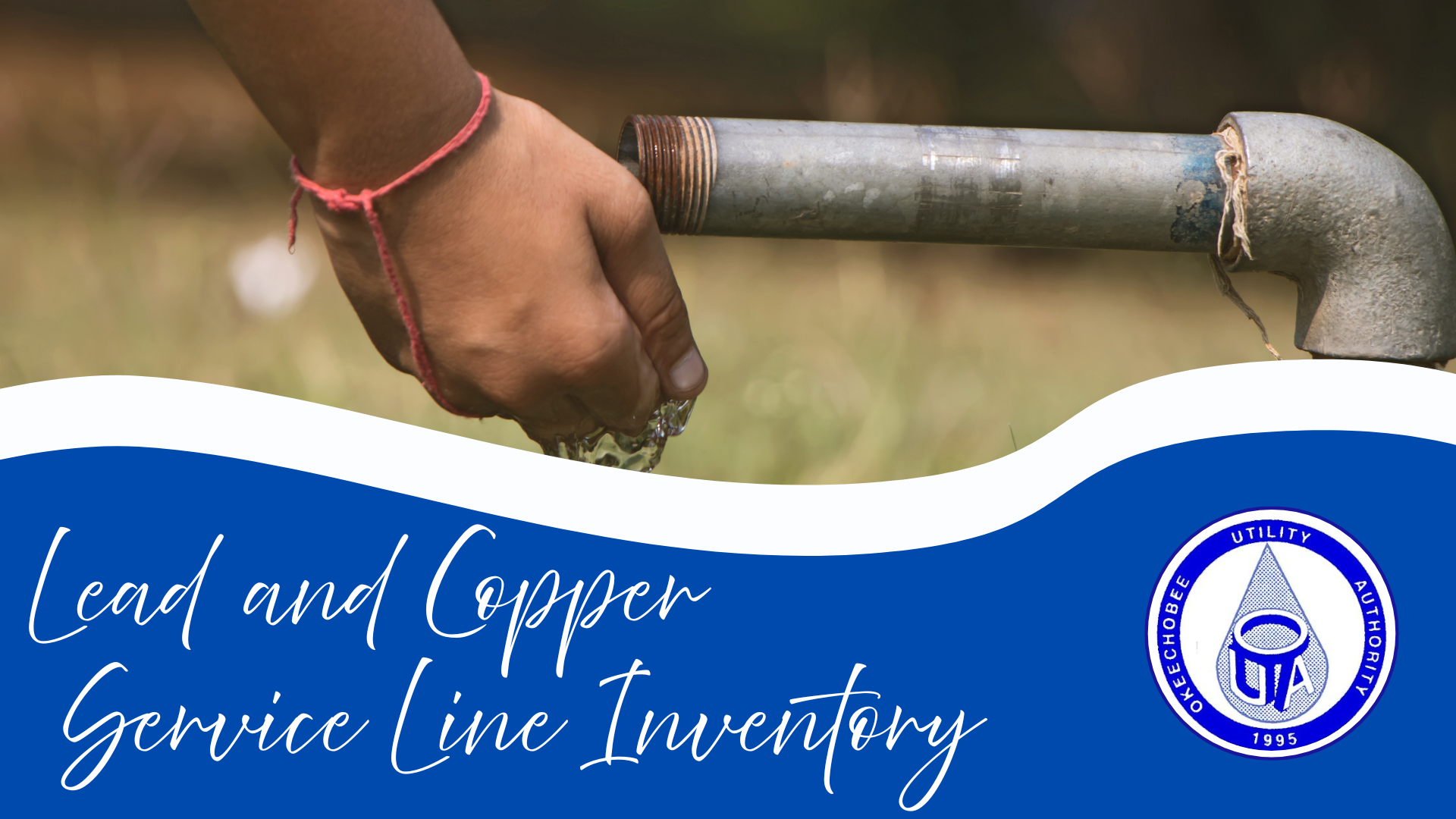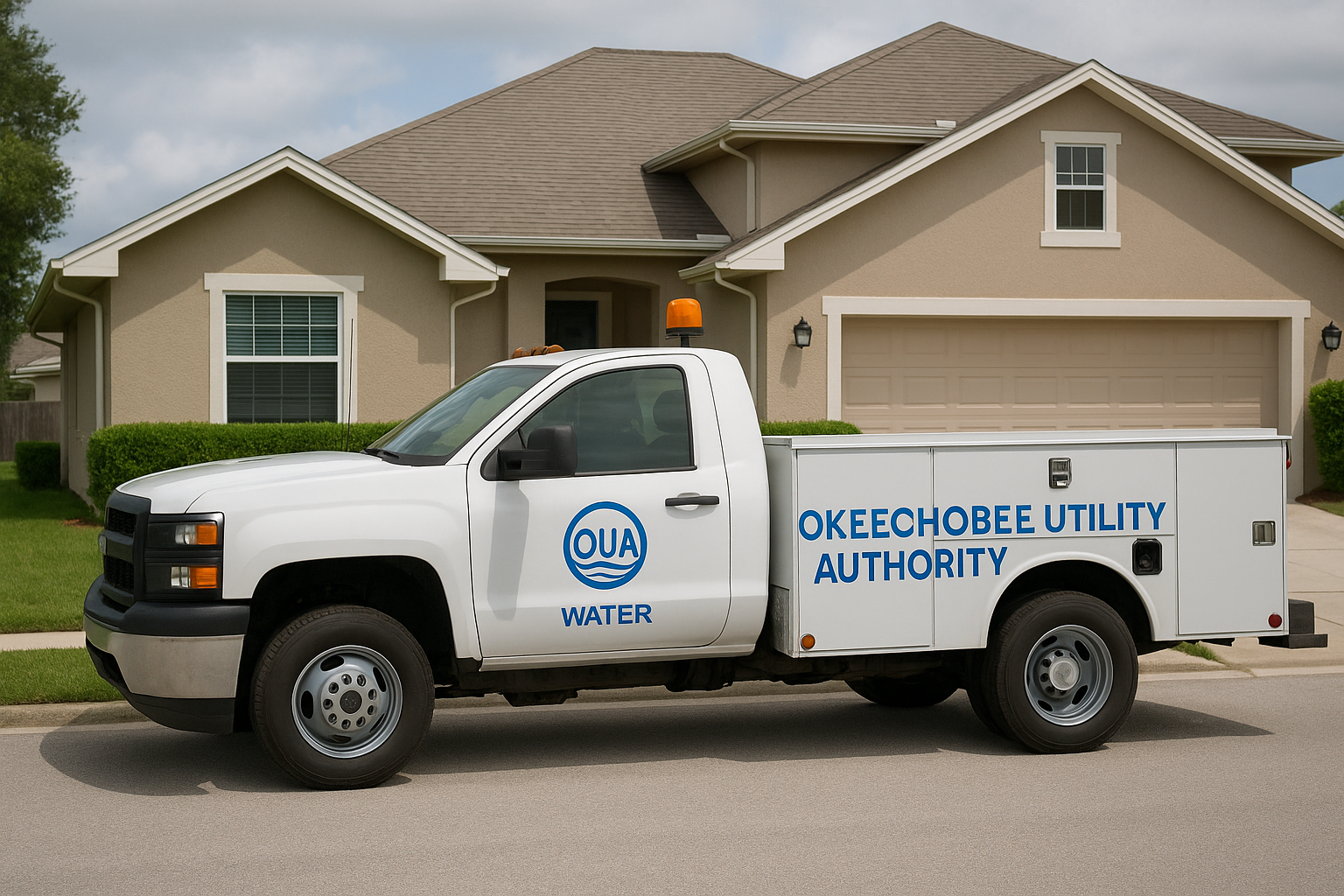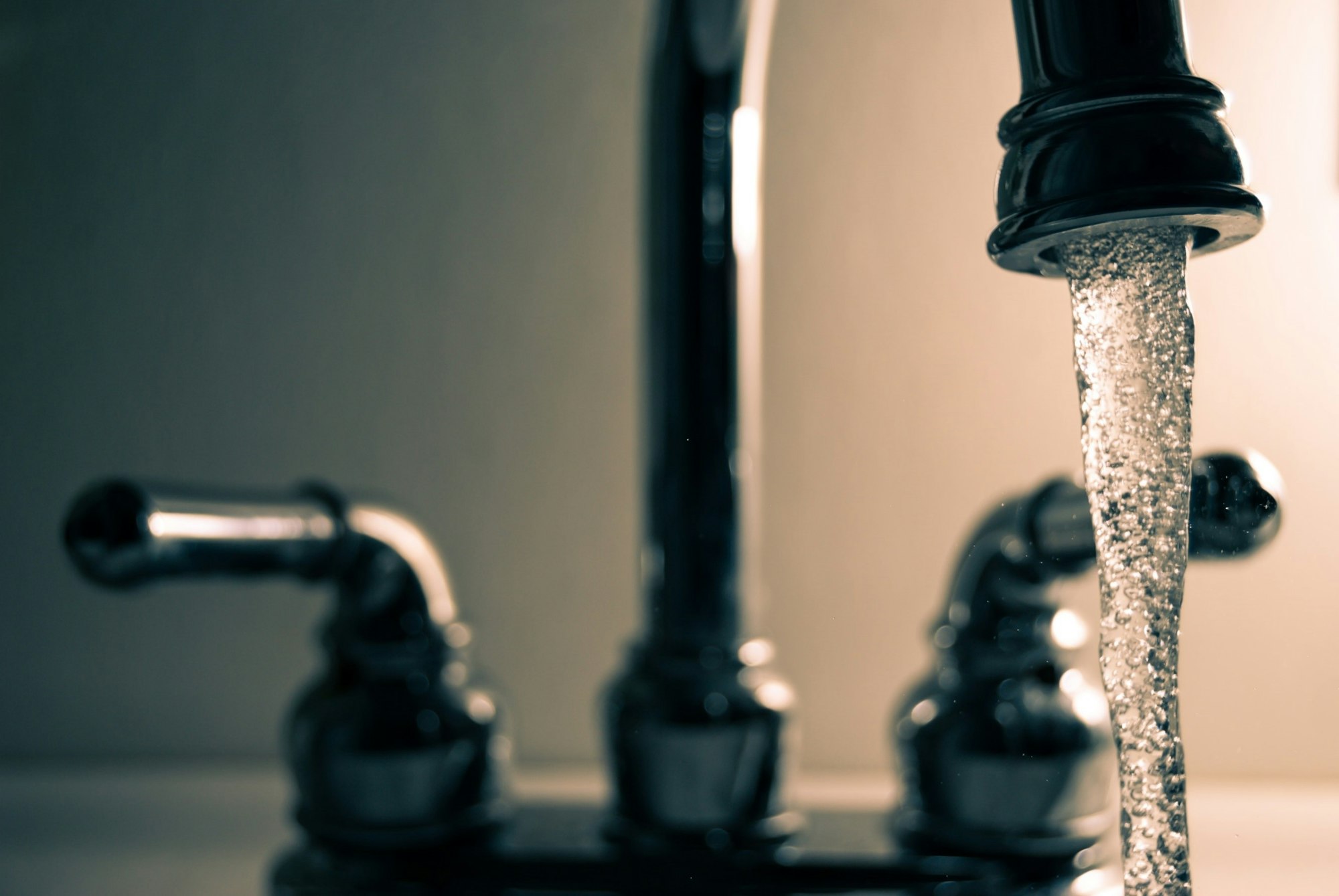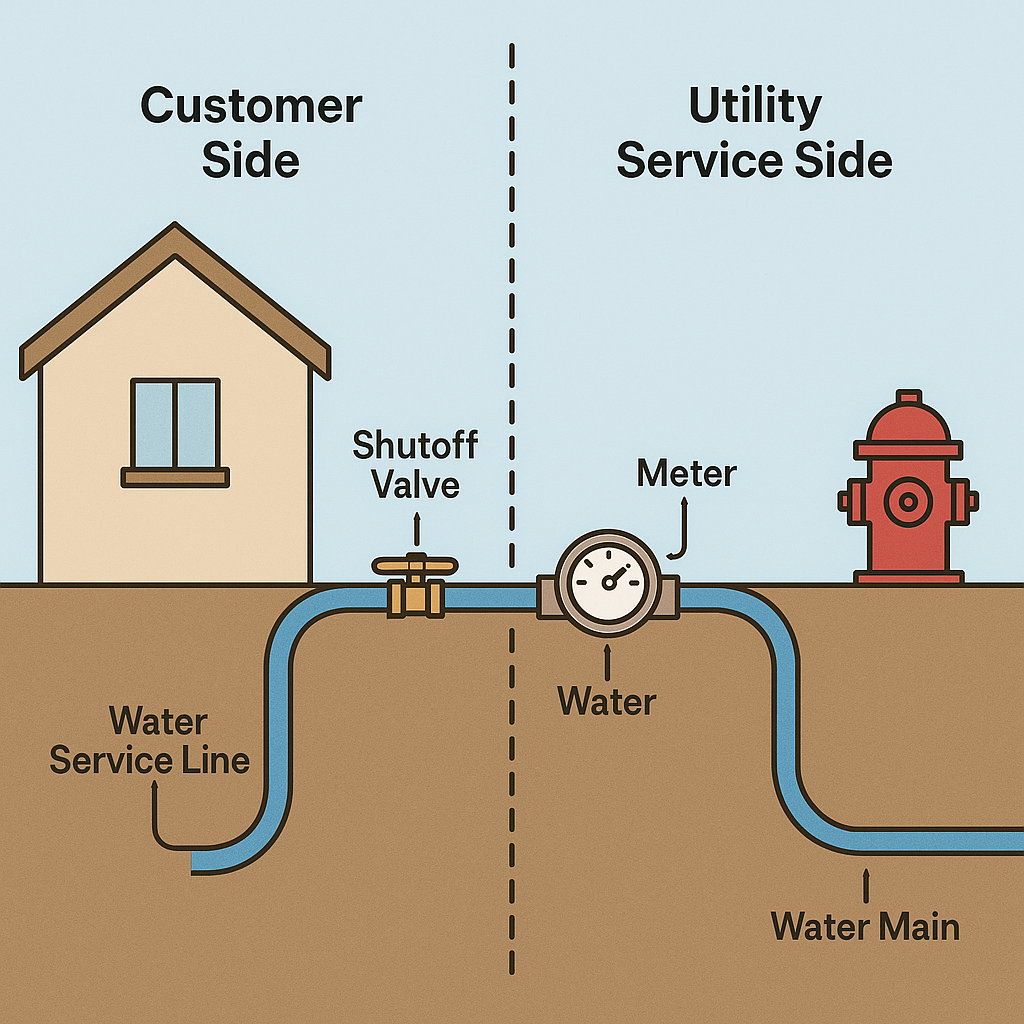Lead and Copper Service Line Inventory

Learn about the Environmental Protection Agency’s Lead and Copper Rule Revision
In 1986, Congress amended the Safe Drinking Water Act to ban the use of non–“lead-free” pipes in public water systems and in plumbing that supplies water for human consumption. To further protect public health, the Environmental Protection Agency (EPA) introduced the Lead and Copper Rule (LCR) in 1991, setting nationwide standards to reduce lead and copper levels in drinking water.
In 2024, the EPA strengthened these protections by implementing the Lead and Copper Rule Revisions (LCRR). This updated rule requires the nationwide removal of water service lines that may contain lead, with a focus on safeguarding children and communities.
Lead typically enters drinking water through the corrosion of plumbing materials containing lead—particularly in systems with highly acidic water or low mineral content. Common sources include lead pipes, faucets, and fixtures. Homes with lead service lines—pipes that connect residences to the main water supply—can face especially high risks. These lead pipes are more commonly found in older homes built before the 1986 ban.
Lead and Copper Rule Revisions (LCRR): What Property Owners Need to Know
In compliance with the EPA’s updated Lead and Copper Rule Revisions (LCRR), which take effect on October 16, 2024, the OUA is conducting a system-wide inventory of all water service lines—including those located on private property.
Service lines are typically buried underground and connect your home or business to the public water system. The portion from the water main to the meter box is owned and maintained by OUA. The section from the meter box to your building is the responsibility of the property owner.
If any lead is found in the service line on your side of the meter, OUA will notify you and provide recommended next steps. Property owners are also responsible for checking, maintaining, and, if needed, replacing any plumbing fixtures inside their home or building that may contain lead.
We’re committed to working with the community to ensure safe, clean drinking water for all. For more information or to learn how to identify your service line materials, [click here/contact us/etc.].
What to Expect

- During the service line inventory, you may see OUA utility crews working near the road or near the water meters.
- Water service will not be interrupted.
- Limited lane closures are possible as crews will be working primarily within the shoulder area of streets.
- Please follow posted signs and drive with caution and slowly if crews are working in the area.
We apologize in advance for any inconvenience and thank our customers for their patience as we complete this project.
How the Okeechobee Utility Authority Delivers Safe, High-Quality Drinking Water
Okeechobee Utility Authority (OUA) delivers safe, reliable drinking water through a comprehensive system that includes surface water intakes, wells, advanced water treatment plants, an extensive network of water mains, and customer service lines that carry water from the main to individual homes and businesses.

Guided by our mission to provide the Best Water, Best Service, and Best Environmental Stewardship, OUA performs hundreds of water quality tests each year—including testing for lead and copper—to ensure the water you receive meets the highest safety standards.
We draw fresh water from Lake Okeechobee, then pump it to our treatment plant. After undergoing rigorous treatment, the water is disinfected in accordance with Florida Departments of Health and Environmental Protection regulations before traveling through more than 293 miles of water mains to reach our customers.
OUA is proud to provide drinking water that is free of any detectable lead, ensuring your health and safety with every drop.
For a full copy of OUA's Consumer Confidence Drinking Water Quality Report, click here .

Frequently Asked Questions - FAQ's
The original Environmental Protection Agency (EPA) Lead and Copper Rule has been protecting children and our communities since 1991. Due to the issues in Flint, Michigan, the EPA, State, Local regulatory agencies and local water utilities including OUA have been working together to improve these protections. There are several major components to this regulation including:
- Locating Legacy Lead Pipes
- Removing the Lead Pipes
- Protecting Children at Schools and Child Care Facilities
Lead is a toxic metal that can cause both immediate and long-term health effects. Even small amounts can be harmful—especially when exposure occurs over time. Drinking water that contains lead can pose serious health risks to people of all ages.
Health Effects of Lead Exposure:
- Infants and children are particularly vulnerable. Lead exposure can lower IQ, reduce attention span, and cause learning and behavioral problems—or worsen existing ones.
- Pregnant women who are exposed to lead may increase the risk of developmental issues in their unborn children.
- Adults may face higher risks of high blood pressure, heart disease, kidney damage, and nervous system disorders.
Where Lead Comes From:
Lead is a naturally occurring metal found in soil, air, and water. It is also a powerful toxin that has been widely used in manufactured products. Before being phased out in the 1970s, lead was commonly found in gasoline, paint, and everyday items like ceramics, batteries, ammunition, and cosmetics.
Historically, lead was also used in plumbing because it was easy to work with and resistant to leaks. In fact, the symbol for lead—Pb—comes from the Latin word plumbum, meaning plumbing. However, in 1986, Congress amended the Safe Drinking Water Act to ban the use of lead pipes nationwide and required plumbing materials to meet new “lead-free” standards.
Copper is a naturally occurring metal found in rocks, soil, water, and sediment. While copper is essential to human health in small amounts, exposure to high levels—though uncommon—can lead to health issues such as stomach upset, liver or kidney damage, and anemia.
Humans have used copper for thousands of years to create alloys like brass and bronze. Today, it remains an important material used in everyday products, including pennies, electrical wiring, and plumbing materials like household water pipes.
Although the Lead and Copper Rule Revisions (LCRR) are focused on identifying and removing lead service lines, copper pipes are generally not subject to removal. This is because copper is not considered a major contaminant in drinking water. The primary concern remains lead, which can leach into water from aging pipes—especially in systems with corrosive water.
The water service line is the pipe that carries water from the main line in the street to your home. OUA is responsible for the portion of the service line that runs from the water main to the meter box. The property owner is responsible for the section that runs from the meter to the home.
For a visual reference, see the illustration above showing a typical residential service line layout. Keep in mind that meter boxes may be located in the front, side, or even backyard, depending on the property.
A nationwide ban on lead in plumbing took effect in 1986, so homes built after that year generally do not have lead service lines.
To comply with updated federal regulations and protect public health, OUA is conducting a comprehensive inventory of all service lines under its jurisdiction. As part of this effort, we will also evaluate service lines owned by property owners.
Using a combination of national and local regulations, historical records, utility GIS mapping, and field inspections, OUA is building a service line inventory.
OUA is in full compliance with all current and proposed EPA regulations. For residents in the OUA service area, the most recent Consumer Confidence Drinking Water Quality Report can be found on our website here. This report provides a description of where your water comes from, how it is treated, and a summary of the laboratory analysis of ________of water samples collected each year. The report is released annually each year in June.
OUA is in full compliance with all current and proposed EPA regulations under the Lead and Copper Rule and the Lead and Copper Rule Revisions (LCRR). We are proud to provide drinking water that is free of any detectable lead.
To prevent lead from dissolving into drinking water from old pipes or household plumbing, OUA uses a proven process called corrosion control, which adjusts the water’s chemistry at the treatment plant to protect against pipe corrosion. We regularly sample water from homes to ensure this process remains effective. While corrosion control significantly reduces the risk of lead exposure, removing lead-containing materials is the most reliable long-term solution.
Proactive Service Line Inventory
In line with the LCRR, OUA is conducting a comprehensive inventory of all service lines across our 30-square-mile service area, covering over 10,000 service connections. Our goal is to ensure no lead service lines exist in our system.
Our water quality testing consistently confirms that lead levels remain well below the EPA’s action level of 0.015 mg/L, with no exceedances recorded in our service area.
How We’re Building the Inventory
OUA began working on the service line inventory in 2024, shortly after the EPA announced the upcoming LCRR. Our research team began by reviewing:
- Local plumbing codes to track when lead was banned
- Historical construction records and as-built drawings dating back to the 1980’s
- GIS mapping technology to modernize and consolidate records
Where records were incomplete or outdated, we conducted field investigations to physically verify the materials used in service lines.
Below are recommended actions that you may take, separately or in combination, if you are concerned about lead in your drinking water. The list also includes where you may find more information and is not intended to be a complete list or to imply that all actions equally reduce lead from drinking water.
- Use your filter properly. Using a filter can reduce lead in drinking water. If you use a filter, it should be certified to remove lead. Read any directions provided with the filter to learn how to properly install, maintain, and use your cartridge and when to replace it. Using the cartridge after it has expired can make it less effective at removing lead. Do not run hot water through the filter. For more information on facts and advice on home water filtration systems, visit EPA's website at https://www.epa.gov/ground-water-and-drinking-water/home-drinking-water-filtration-fact-sheet and EPA's Consumer Tool for Identifying Drinking Water Filters Certified to Reduce Lead.
- Clean your aerator. Regularly remove and clean your faucet's screen (also known as an aerator). Sediment, debris, and lead particles can collect in your aerator. If lead particles are caught in the aerator, lead can get into your water.
- Use cold water. Do not use hot water from the tap for drinking, cooking, or making baby formula as lead dissolves more easily into hot water. Boiling water does not remove lead from water.
-
Flush Your Pipes to Reduce Potential Lead Exposure
- When water sits in your home’s pipes for extended periods—such as overnight or during the day while you're away—it can absorb lead from plumbing materials if they are present. The longer water remains stagnant, the greater the potential for lead exposure.
- To help reduce this risk, flush your pipes before using water for drinking or cooking:
- Run the cold water tap for 15 to 30 seconds (or until it feels colder) if the water hasn’t been used for more than six hours.
- You can also flush your plumbing by taking a shower, doing laundry, or running the dishwasher before using tap water for consumption.
- The amount of time needed to flush depends on whether your home has a lead service line, as well as the length and complexity of your plumbing system. When in doubt, always use cold water for drinking, cooking, and preparing baby formula, as hot water can increase the release of lead.
- Have your water tested. If you think you may have elevated lead levels in your home drinking water have it tested by an accredited laboratory. You may contact the health department for a list. For more information, call the Okeechobee County Health Department at (863)462-5800 and ask for the Lead Poisoning Prevention Program.
The Florida Department of Environmental Protection (FDEP) has partnered with Florida Rural Water Association (FRWA) through a grant from the Environmental Protection Agency (EPA) known as the “WIIN 2107” grant. This program will allow Florida schools (public, charter, private) and licensed childcare facilities to benefit from this initiative at no cost. All participating facilities will receive:
- On-site drinking water sample collection and analysis.
- Guidance for effectively communicating with parents and the community.
- All testing results will be posted on DEP’s Voluntary Lead Testing Program for Schools and Childcare Facilities webpage.
